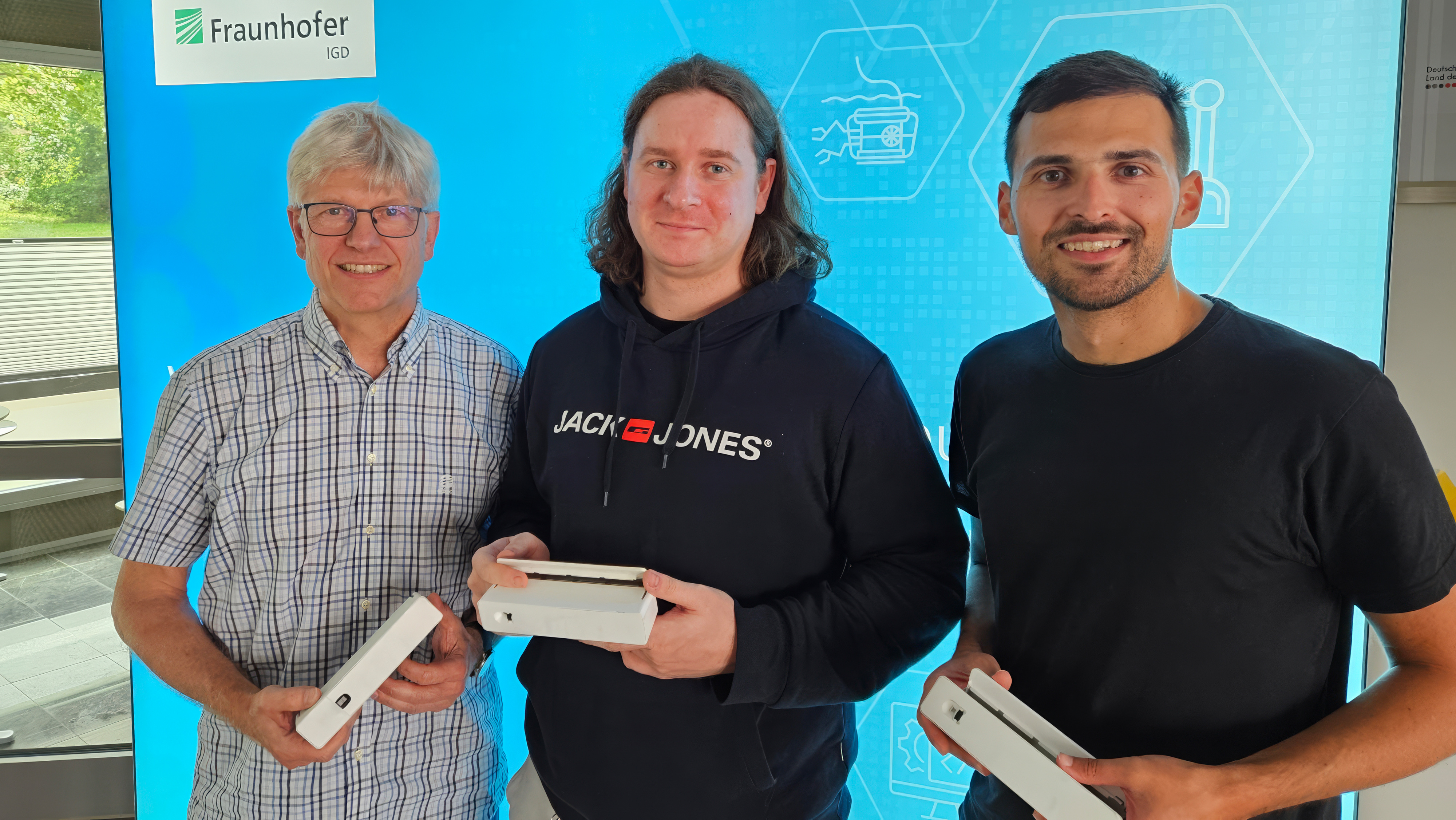Identifying Sepsis Early On
AI-Supported Sensor Technology for Patient-Centered Remote Monitoring
In collaboration with Hypros GmbH, the Fraunhofer Institute for Computer Graphics Research (IGD) has completed a proof of concept for contactless sensor technology that can detect spontaneous changes in health status early on. The HealthView project aims to investigate the reliability of remotely measuring vital parameters such as respiratory rate, pulse, and body temperature using AI and imaging sensors.
In everyday clinical practice, it can be difficult to predict sudden changes in a patient’s condition, such as those brought on by infections, drug reactions, fluid imbalances, or circulatory problems. Continuous, contactless monitoring could alert medical staff to critical developments early on. This could also allow for the early detection of possible sepsis. With up to 100,000 cases each year in Germany alone, sepsis is one of the most common health risks in hospitals, yet it is often overlooked. Early detection is crucial for patient survival, but commonly used manual checks are not effective in many cases. The proof of concept conducted by Fraunhofer IGD in Rostock shows that a combination of RGB cameras, thermal sensors, and distance sensors supported by AI could serve as an early warning system in the future. This system could be installed directly above the hospital bed without requiring direct contact with the patient. Initial tests with high-resolution sensors have proven that chest movements can be detected even when the subject is under the covers
Data privacy-compliant remote monitoring in clinical practice
Hypros GmbH brings its many years of expertise in data-privacy-friendly remote monitoring to the joint project. The company has developed an AI-based system that can detect critical situations in hospitals, such as patients leaving their beds at night, the onset of delirium, and pressure ulcers. The system involves using battery-powered Internet of Things (IoT) devices with low-resolution optical and environmental sensors that do not generate identifying image data. A two-stage AI architecture, in which a trained model based on high-resolution images is transferred to low-resolution sensors, enables effective event detection while protecting privacy. This solution provides caregivers with real-time information about patients’ conditions and enables continuous monitoring. The role of doctors remains central, with AI providing information and assessments. Medical professionals always make the final decision regarding diagnosis and treatment.
“Given the demographic changes and growing shortage of skilled workers in the healthcare sector, we need technologies that provide targeted support to staff while ensuring patient safety,” said Tobias Gebhardt, the CEO of Hypros GmbH. “In times of scarce human resources, AI-supported remote monitoring can greatly improve the quality of care.”
Proof of concept lays foundation for further development
The study found that reliably detecting relevant sepsis signs, such as respiratory rate, pulse, and body temperature, is technically feasible, provided that the sensor resolution, algorithms, and system architecture are adapted accordingly. Existing solutions, such as patient monitoring systems from Hypros GmbH, can be upgraded to include higher-resolution thermal imaging technology, RGB cameras, and AI-powered data fusion capabilities. The primary challenges include the placement and energy efficiency of the sensors, along with their incorporation into existing clinical procedures.
The project results lay the groundwork for the development of a marketable system. As next steps, Fraunhofer IGD recommends applying for additional funding, evaluating higher-resolution sensors and AI-based evaluation algorithms for clinical use, and investigating temperature measurement with higher resolution.

 Fraunhofer Institute for Computer Graphics Research IGD
Fraunhofer Institute for Computer Graphics Research IGD